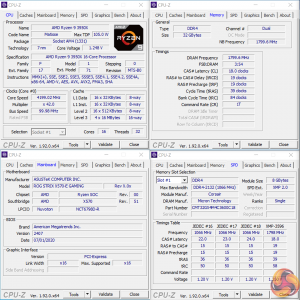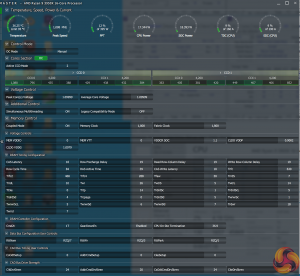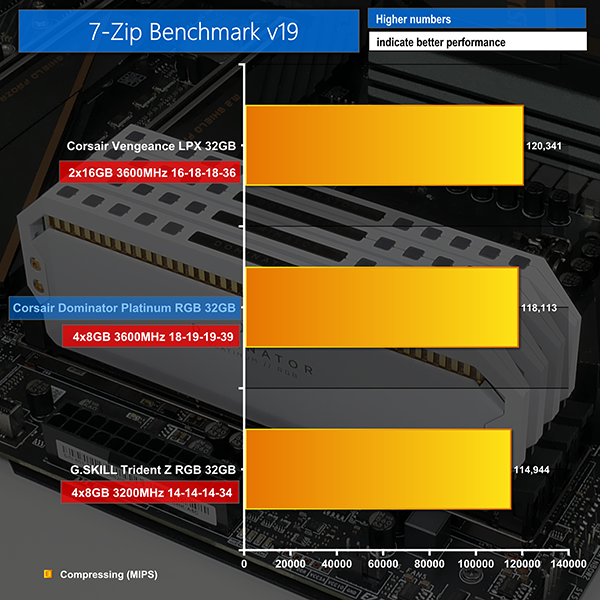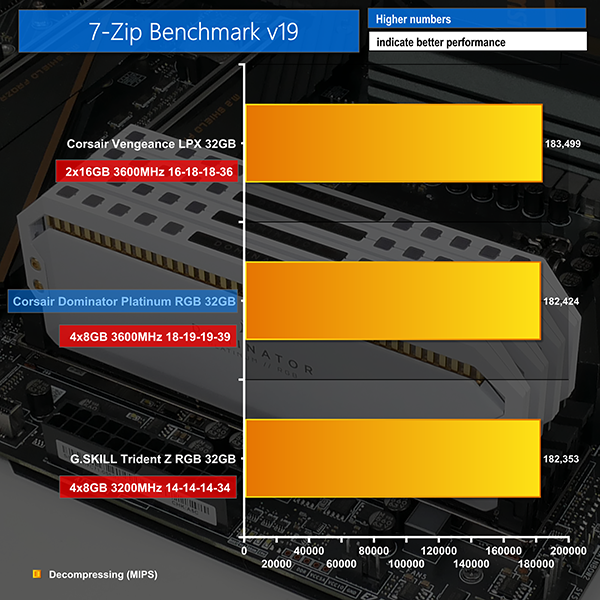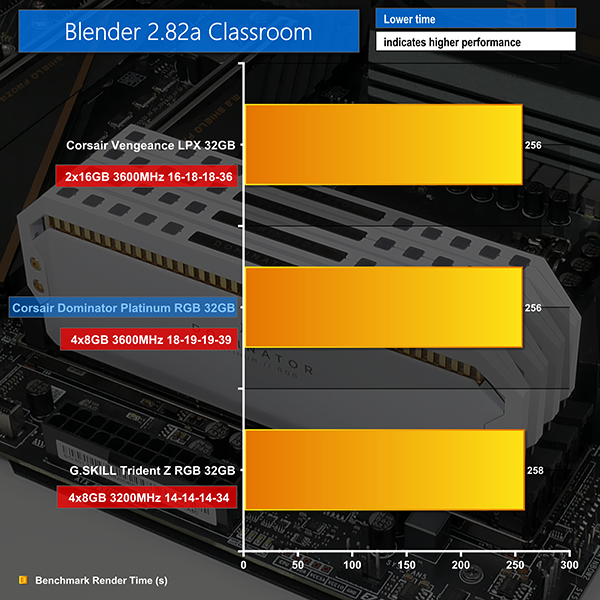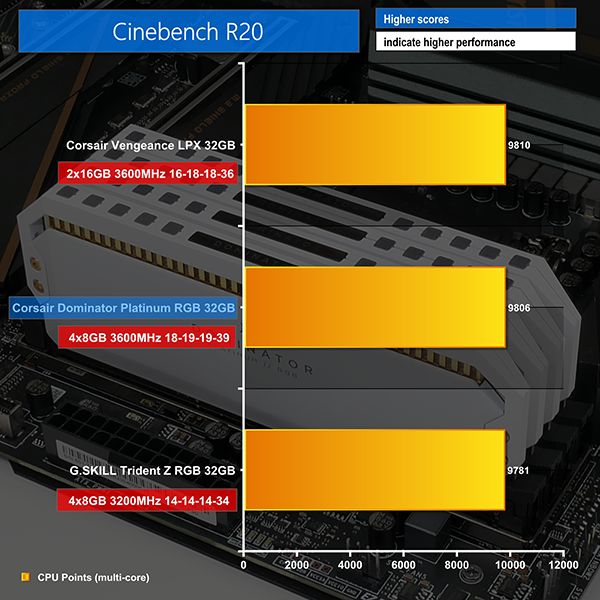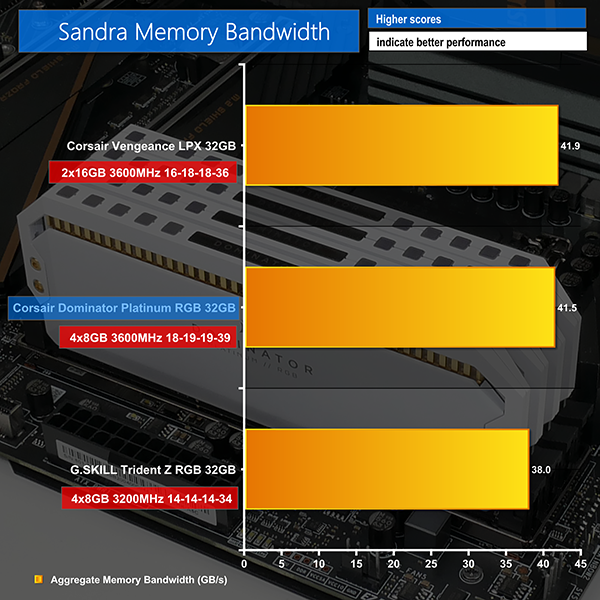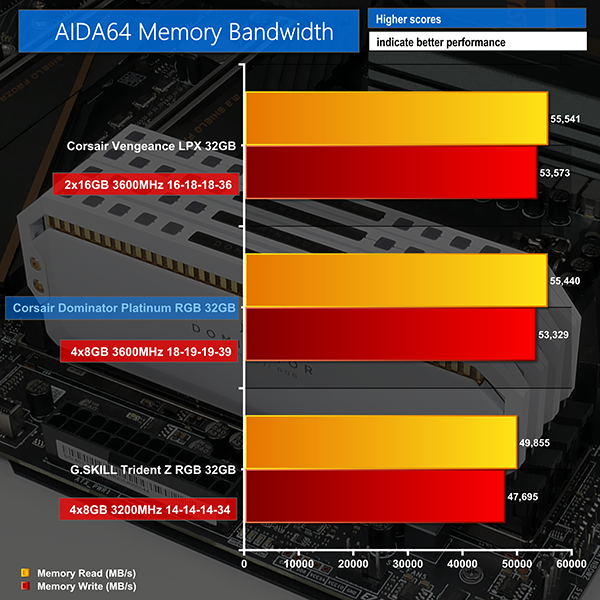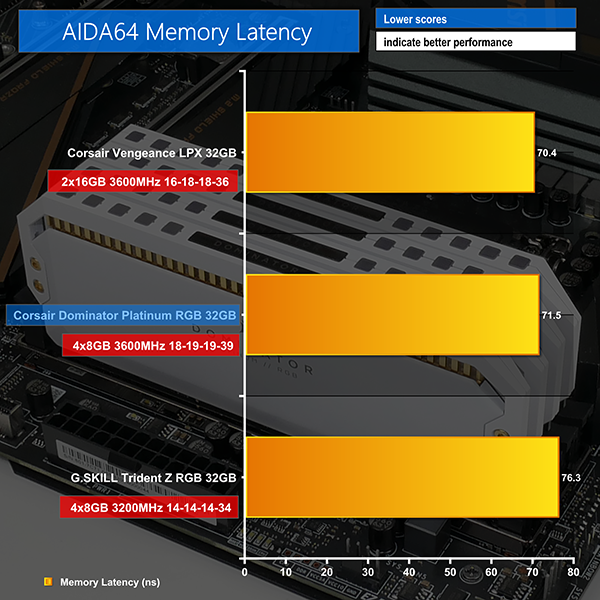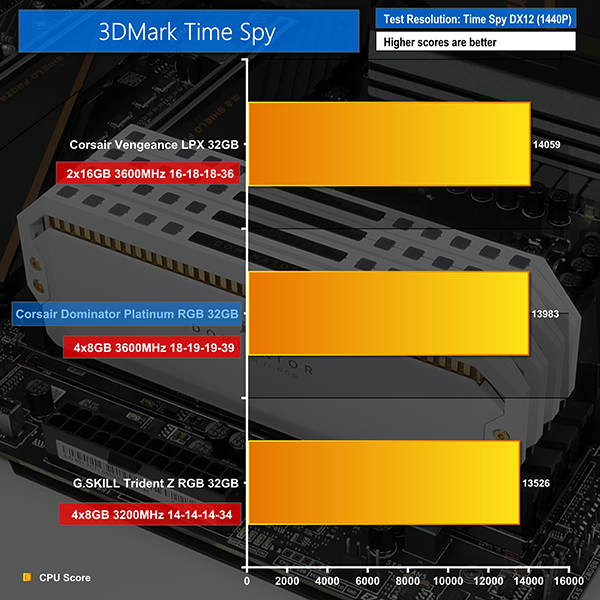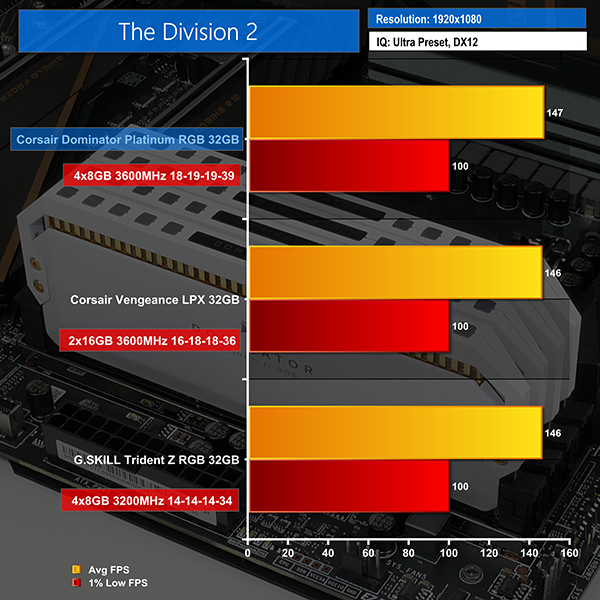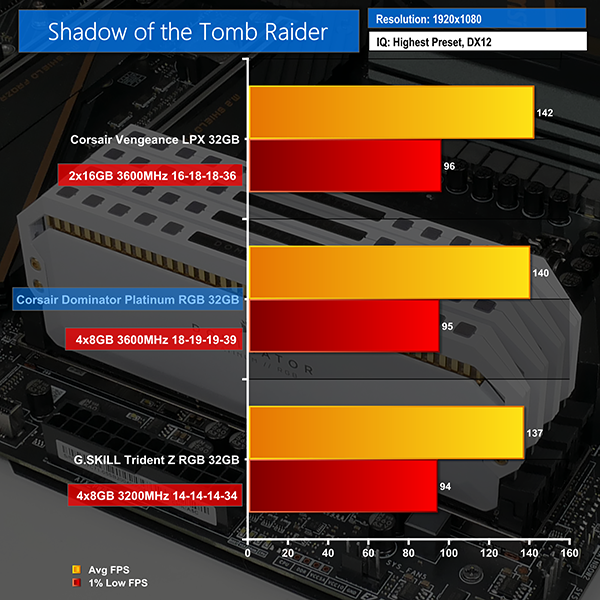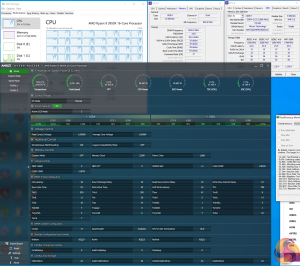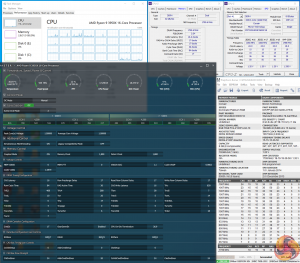We will be outlining the Corsair Dominator Platinum RGB DDR4 memory’s performance with the AMD Ryzen 9 3950X CPU, ASUS ROG STRIX X570-E Gaming, and an Aorus RTX 2080 Ti XTREME graphics card.
Test System:
- Processor: AMD Ryzen 9 3950X overclocked to 4.2GHz all core.
- Motherboard: ASUS ROG STRIX X570-E Gaming.
- Graphics Card: Gigabyte Aorus RTX 2080 Ti XTREME 11G (custom fan curve to eliminate thermal throttling).
- System Drive: WD_Black SN750 SSD.
- Games SSD: Aorus PCIe Gen 4 2TB SSD.
- CPU Cooler: Fractal Celsius+ S28 Prisma 280mm AIO.
- Power Supply: Seasonic Prime TX-1000 1000W.
- Case: Lian Li Open-air Test Bench.
- Operating System: Windows 10 Pro 64-bit.
Comparison Memory Kits:
- 2x16GB of Corsair Vengeance LPX DDR4 3600MHz 16-18-18-36 @ 1.35V.
- 4x8GB of G.SKILL Trident Z RGB DDR4 3200MHz 14-14-14-34 @ 1.35V.
7-Zip Compressing
Solid performance is shown in 7-Zip. The compressing number from Corsair’s Dominator Platinum RGB modules is just behind that of the tighter Vengeance LPX kit and better than our Trident Z RGB competitor.
7-Zip Decompressing
Decompressing is a slightly different picture, with the performance differences between each memory kit being insignificant.
Blender Classroom
Blender runs well on the Micron-based Corsair modules, with their performance level matching that of the tighter Vengeance LPX sticks.
Cinebench R20
Cinebench R20 nT also puts the Dominator modules close to the performance of the tighter latency Vengeance LPX comparison. The performance uplift over G.SKILL’s tight 3200MHz Samsung B-die sticks is measurable and repeatable.
SiSoft Sandra Memory Bandwidth
Memory bandwidth from the Dominator Platinum RGB kit falls in line with DDR4 3600MHz expectations. The added bandwidth over 3200MHz sticks may be worthwhile in certain use cases.
AIDA Memory Bandwidth
The exact same feedback holds true for AIDA’s memory bandwidth test, with both 3600MHz kits offering an improvement over the 3200MHz and 1600MHz Infinity Fabric configuration.
AIDA Memory Latency
Latency performance of the 18-19-19-39 Dominator kit cannot match the tighter Vengeance LPX modules, unsurprisingly. The higher frequency of Corsair’s white modules does, however, help alleviate some of the timings benefits of our Trident Z comparison to deliver better latency numbers.
3DMark Time Spy
There’s little performance difference between the premium Dominator kit and the tighter Vengeance LPX modules in 3DMark.
The Division 2
That same feedback holds true in The Division 2, with each memory kit offering the same performance, aside from margin of error factors.
Shadow of the Tomb Raider
Shadow of the Tomb Raider, however, is more sensitive to memory settings and rewards the Dominator Platinum RGB kit with higher performance than a 3200MHz C14 competitor. The penalisation comes in the form of lower performance compared to 3600MHz C16 competition.
Overclocking
A quick and dirty overclock delivered us 4000MHz using the default timings with a voltage increase. We did not aim to reduce the voltage below 1.5V (though we would for 24/7 usage) as we were more keen on taking a quick look at the modules’ capability. 4200MHz did not play nice in our testing as the motherboard would not POST at this level with the out-of-the-box timings.
And if you’re more interested in reducing the latencies, another quick test allowed us to run the modules at their default 3600MHz rated frequency with the latencies squeezed down to 16-17-17-36. We did not have luck trying 16-16-16-36 timings with our quick check, but further tuning to the motherboard and CPU voltages would likely yield better results.
An overclock of 4GHz with the rated timings or two-rank tightened timings on the out-of-the-box frequency are both positive results for our kit.
 KitGuru KitGuru.net – Tech News | Hardware News | Hardware Reviews | IOS | Mobile | Gaming | Graphics Cards
KitGuru KitGuru.net – Tech News | Hardware News | Hardware Reviews | IOS | Mobile | Gaming | Graphics Cards


